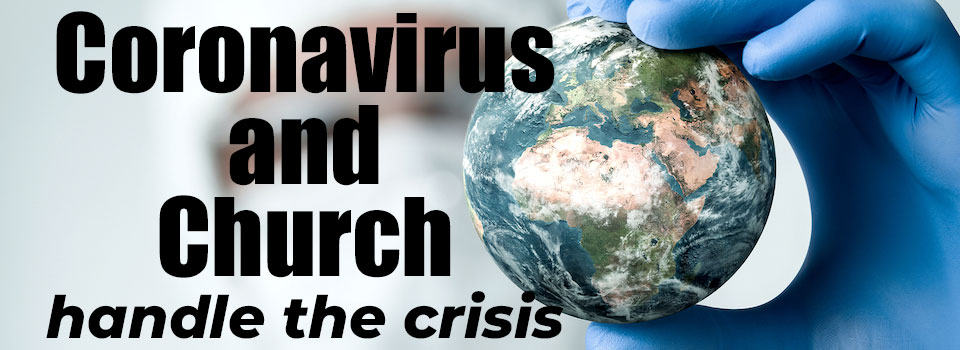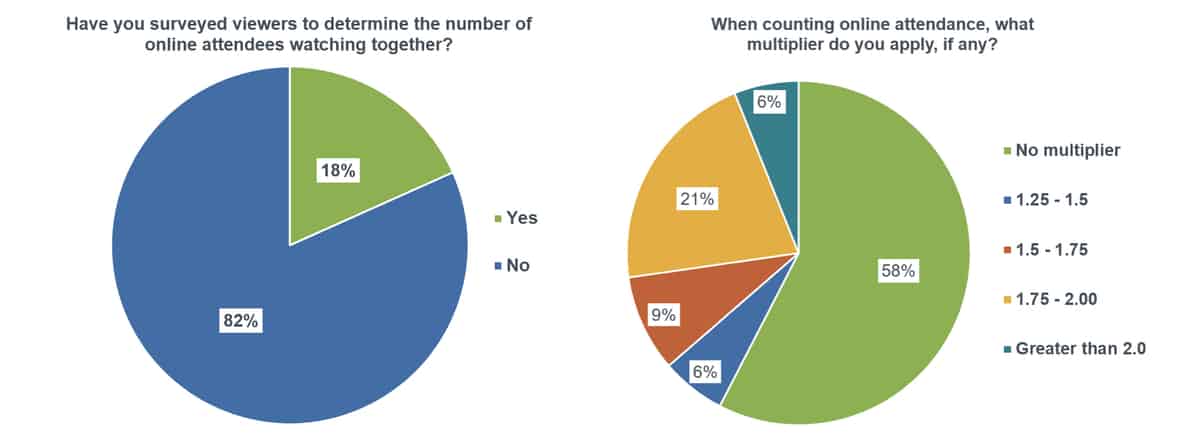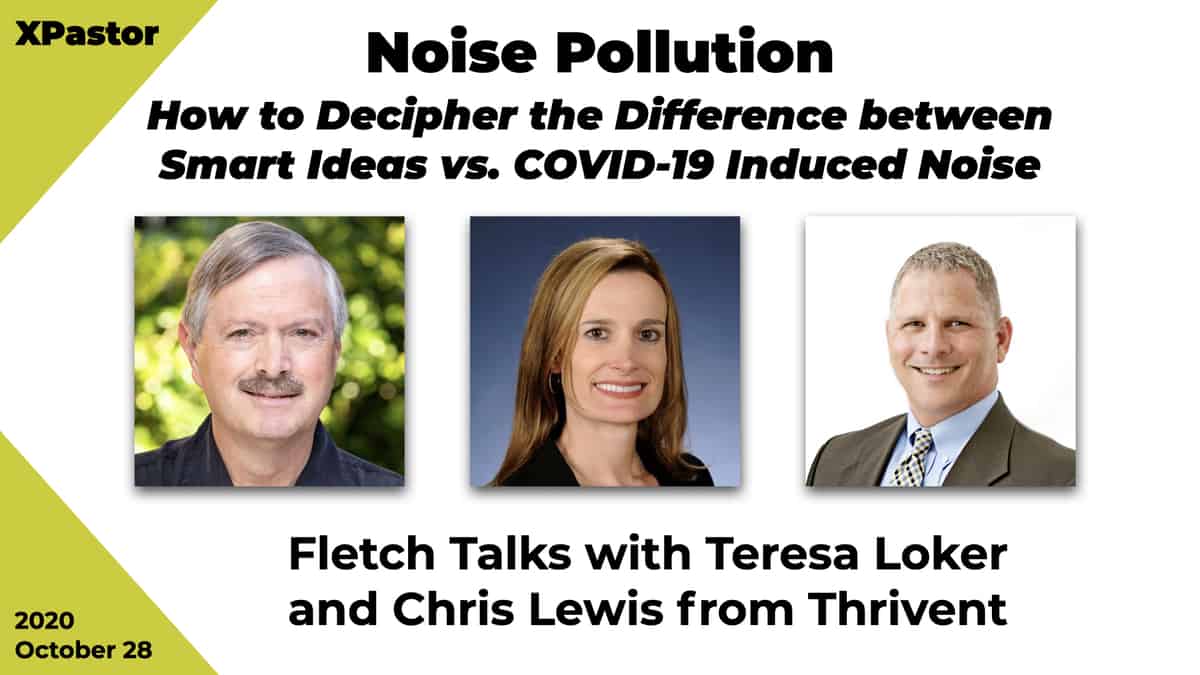Michael E. Batts, CPA, is the managing partner of Batts Morrison Wales & Lee, P.A., Certified Public Accountants. Along with partner Michele Wales, CPA, and CPA Kaylyn Varnum, they unpack a complicated new regulation from the federal government. This information is current as of March 25, 2020, but check the BMWL page for updates on this unfolding issue.
Emergency Paid Sick Leave in connection with COVID-19 and Emergency Family and Medical Leave in connection with COVID-19
On Wednesday, March 18, 2020 Congress passed and President Trump signed into law the Families First Coronavirus Response Act (FFCRA), requiring employers to provide certain sick pay and family medical leave benefits to eligible employees affected by the coronavirus pandemic. The FFCRA requires the federal government to cover the cost of the required benefits on an almost real-time basis via refundable payroll tax credits. While there are still some areas of the new law that lack clarity, we have summarized the currently available guidance regarding required payments and the related payroll tax credits below, along with Q&A and Examples to help your organization digest the technical provisions therein.
FFCRA mandates two primary types of employer payments for which the employer is reimbursed by the federal government. These provisions of FFCRA generally apply to all employers with fewer than 500 employees:
a. Emergency Paid Sick Leave (EPSL); and
b. Emergency Family and Medical Leave (EFML)
The Emergency Family and Medical Leave Expansion Act (EFMLEA) provisions within FFCRA are separate and distinct from already-existing provisions and requirements of the Family and Medical Leave Act (FMLA). This article addresses the new and temporary provisions of the EFLMEA that relate to requirements for employers related to COVID-19 relief. These new and temporary provisions of the EFLMEA apply to more employers than do the already-existing provisions and requirements of the FMLA. This article does not address the already-existing provisions of the FMLA.
Small employers with fewer than 50 employees are eligible for an exemption from the EPSL and EFML payment requirements related to school closures or child care unavailability where the requirements to pay those amounts would jeopardize the ability of the employer to continue. The Department of Labor is expected to issue additional guidelines regarding this exception.
Employers are permitted to claim a refundable payroll tax credit for the payments they are required to make under the law. The credit applies against the employer’s federal payroll tax obligation for the quarter in which EPSL or EFML payments are made to eligible employees. The credit is equal to the required employer payments to employees. While the credits are claimed and reported on the employer’s quarterly Form 941 federal payroll tax return (for qualified EPSL or EFML payments made during that quarter), the employer actually gets the benefit of the credit by reducing its regular payroll tax deposits by the amount of the required payments to employees. Thus, the employer receives the economic benefit of the credit virtually immediately. If the EPSL and EFML payments exceed the employer’s payroll tax deposits for the quarter, the difference will be refunded by the IRS when the employer files its quarterly Form 941 (or by some accelerated method to be developed by the IRS).
Emergency Paid Sick Leave Act (EPSL)
General rule
EPSL (category “a” above) generally mandates that employers pay up to two weeks of sick pay (subject to certain limits below) to current full-time or part-time employees who, because of any one or more of the reasons described below, are unable to work or telework:
- The employee is subject to a Federal, State, or local quarantine or isolation order related to COVID-19;
- The employee has been advised by a health care provider to self-quarantine due to concerns related to COVID-19;
- The employee is experiencing symptoms of COVID-19 and seeking a medical diagnosis;
- The employee is caring for an individual who is subject to an order as described in #1 above or has been advised as described in #2 above;
- The employee is caring for a son or daughter of such employee if the school or place of care of the son or daughter has been closed, or the child care provider of such son or daughter is unavailable, due to COVID-19 precautions;
- The employee is experiencing any other substantially similar condition specified by the Secretary of Health and Human Services in consultation with the Secretary of the Treasury and the Secretary of Labor.
An employee is eligible for EPSL payments regardless of how long he/she has been employed by the employer (this is different from the rules related to EFML payments described below).
Limitations
The sick pay described above is only effective until the employee is able to resume work (or telework), and is subject to certain hour limitations. For full-time employees, the sick pay described above is limited to 80 hours (10 days). For part-time employees, the sick pay described above is limited to the average number of hours the part-time employee works for the employer over a two-week period. See the Q&A section below for how to calculate the average hours in scenarios where a part-time employee work hours fluctuate.
Additionally, the rate upon which the sick pay described above that would be paid to each employee is generally calculated based upon the greater of the employee’s regular pay or minimum wage. However, the specific calculation depends upon the reason for missing work (items 1-6 above), and is further subject to dollar limitations.
For individuals unable to work or telework due to reasons 1-3 above, the amount of sick pay (and the applicable employer credit) is limited to $511 per day and $5,110 in total ($511 per day for 10 days). For individuals unable to work or telework due to reasons 4-6 above, the amount of sick pay (and the applicable credit) is limited to $200 per day and $2,000 in total ($200 per day for 10 days).
Examples—calculating wages paid and payroll tax credits under EPSL provisions above
Example 1
ABC Charity pays John Doe, a full-time, non-clergy employee, a salary of $65,000. The city in which John Doe lives is under a mandatory quarantine and John Doe is unable to perform services for ABC Charity for two weeks in late April 2020. John Doe’s calculated daily rate is $250 ($65,000/260 days). John Doe’s reason for missing work falls in categories 1-3 above. Therefore, John Doe is owed $2,500 ($250 * 10 workdays) by ABC Charity for the two weeks he missed work. ABC Charity would reduce its payroll tax deposits by a total of the sick leave paid to John Doe of $2,500. ABC Charity will claim a credit on its Quarter 2 2020 Form 941 equal to $2,500. The refundable credit works to replace the reduced deposits during the quarter.
Example 2
Assume the same facts as Example 1 except John Doe misses two weeks of work because he has to stay home to care for his child who is out of school. Because John Doe’s reason for missing work falls in categories 4-6, John Doe is only entitled to $2,000 of sick pay under the EPSL ($200 * 10 workdays). ABC Charity would reduce its payroll tax deposits by a total of the EPSL sick leave paid to John Doe of $2,000. ABC Charity will claim a credit on its Quarter 2 2020 Form 941 equal to $2,000. The refundable credit works to replace the reduced deposits during the quarter. Any additional wages paid by ABC Charity to John Doe during the two weeks John Doe was unable to work are not eligible for the refundable payroll tax credit (e.g., if ABC Charity paid John Doe his normal pay, only $2,000 of the full amount paid to John Doe would be eligible for the credit).
Example 3
ABC Charity pays John Doe, a part-time, non-clergy employee, $12 per hour (assume his hourly rate is higher than the minimum wage). John Doe typically works an average of 20 hours per week. In mid-April 2020, John Doe contracts COVID-19 and cannot work for 7 workdays. He resumes work by telecommuting after 7 workdays. The pay John Doe is owed under EPSL is calculated as follows: $12 per hour * 28 hours (20 hours for 1 week plus 2/5 of 20 hours for the second week, for a total of 28 hours) = $336. ABC Charity would reduce its payroll tax deposits by a total of the EPSL sick leave paid to John Doe of $336. ABC Charity will claim a credit on its Quarter 2 2020 Form 941 equal to $336. The refundable credit works to replace the reduced deposits during the quarter.
Emergency Family and Medical Leave (EFML)
The EFML requirements of the law (category “b” above) generally mandate that employers pay a portion of the salary of certain eligible employees who are unable to work or telework because the school or place of care at which their son or daughter under 18 years of age attends has been closed, or the child care provider of such son or daughter is unavailable due to a public health emergency (further defined as an emergency with respect to COVID-19 declared by a Federal, State, or local authority). EFML provisions also require most employers to ensure that the employee will be able to return to work in an equivalent position; however, these rules are outside the scope of this communication and are best addressed with employment law counsel.
In order to qualify for EFML benefits, the employee must have been employed for at least 30 calendar days by the employer.
EFML benefits cover 12 weeks of leave, with the first two weeks being unpaid (however, employees would generally be covered under the EPSL provisions outlined above for those first two weeks). After the first two weeks of leave (during which employees may receive benefits under EPSL or take accrued vacation leave, personal leave, or medical or sick leave if desired), the employer is mandated to pay eligible employees at least two-thirds of the employee’s regular rate of pay times the number of hours the employee would otherwise be normally scheduled to work, subject to a $200 per day limit, and a $10,000 limit in total (10 weeks [50 days] x $200 per day).
Employers are permitted to take a refundable payroll tax credit for the quarter in which such EFML payments are made to eligible employees, subject to the same dollar limits as the mandated pay amounts above. Essentially, this means that employers can forgo making payroll tax deposits equivalent to the amount of pay made under the EFML provision above during the quarter up to the total amount of employer tax deposits for the quarter. If the EFML payments exceed the employer’s payroll tax deposits for the quarter, the difference will be refunded by the IRS when the employer files its quarterly Form 941 (or by some accelerated method to be developed by the IRS).
Examples—calculating wages paid and payroll tax credits under EFML provisions
Example 1
ABC Charity pays Jane Doe, a full-time, non-clergy employee, a salary of $65,000. Jane Doe is unable to work or telework for ABC Charity for 8 weeks beginning in late April 2020 because her children’s school closed due to COVID-19-related measures taken by the state government. Jane Doe’s calculated daily rate is $250 ($65,000/260 days). Therefore, for EFML purposes, Jane Doe is not paid for weeks 1-2 (although, Jane Doe would likely qualify for benefits under the EPSL provisions above). For weeks 3-8, ABC Charity must pay Jane Doe at least $5,025 in total (calculated at a rate of $167.50 ($250 x .67) x 30 days (5 days x 6 weeks)). ABC Charity would reduce its payroll tax deposits in the amount of $5,025. ABC Charity will claim a credit on its Quarter 2 2020 Form 941 equal to $5,025. The refundable credit works to replace the reduced deposits during the quarter.
Example 2
Assume the same facts as Example 1 above, except Jane Doe is a part time employee who normally works 20 hours per week and is paid $12 per hour (assume her hourly rate is higher than the minimum wage). For EFML purposes, Jane Doe is not paid for weeks 1-2 (although, Jane Doe would likely qualify for benefits under the EPSL provisions above). For weeks 3-8, ABC Charity must pay Jane Doe at least $964.80 in total (calculated at a rate of $8.04 ($12 x .67) x 120 hours (20 hours x 6 weeks)). ABC Charity would reduce its payroll tax deposits in the amount of $964.80. ABC Charity will claim a credit on its Quarter 2 2020 Form 941 equal to $964.80. The refundable credit works to replace the reduced deposits during the quarter.
Questions and Answers
What is the actual effective date of these new rules?
The provisions of the FFCRA that require employer to pay emergency paid sick leave and/or emergency family medical leave are effective “not later than 15 days after the date of enactment of this Act,” (i.e., not later than April 2, 2020). It appears that this means that employers must comply with the family leave and paid sick leave provisions outlined above no later than April 2nd.
However, the tax credits available to employers for payments made for emergency paid sick leave and emergency family medical leave under the provisions outlined above apply only to wages paid beginning on a date selected by the Secretary of the Treasury that is between March 18th and April 2nd, and ending on December 31, 2020. The Secretary of the Treasury had not announced the exact beginning date as of the date of this writing.
Therefore, if employers want to maximize their payroll tax credits (and ensure payments to employees under FFCRA are fully funded by the federal government), an employer would wait until the Treasury announces its effective date to begin making FFCRA payments. Payments made voluntarily before the Treasury-announced effective date may not be eligible for payroll tax credits.
For purposes of determining whether an employer employs less than 500 employees, are related organizations aggregated? Are part-time employees counted differently than full-time employees?
It appears that, in general, the employer rules are applied on a legal entity basis (i.e., each separate corporation would be treated as a separate employer). However, the rules that apply to the Family and Medical Leave Act of 1993 may also apply to certain provisions of this new law. Those rules include certain provisions related to treating separate related entities as one employer if certain conditions apply. Nonprofit organizations with a multiple-entity structure where aggregating the employees of each entity would cause the group to exceed the 500-employee threshold may wish to discuss the application of these new rules with their employment law counsel.
It appears that, in general, part-time employees are counted in the same manner as full-time employees for purposes of the 500-employee threshold. However, as noted above, certain provisions of the Family and Medical Leave Act of 1993 may also apply to certain provisions of this new law. Accordingly, larger nonprofit organizations may wish to consult their employment law counsel if the manner in which the 500-employee threshold is calculated could affect whether they are covered by the law.
How are the EFML and EPSL payments calculated for a part-time employee?
For purposes of computing EFML payments, the payments are calculated based on: (1) a pay rate that is not less than two-thirds of the employee’s regular rate of pay, and (2) the number of hours that the employee would otherwise be normally scheduled to work (but limited to a maximum of $200 per day and $10,000 in the aggregate).
For purposes of computing EPSL payments for a part-time employee, the employer would generally use the employee’s regular rate of pay (or the minimum wage rate if higher) times the number of hours that the part-time employee works, on average, over a 2-week period (but limited to the maximum amounts noted above of $511/day or $200/day, depending on the reason for the paid sick leave).
For both EFML and EPSL purposes, if a part-time employee’s schedule varies from week to week such that the employer is unable to determine with certainty the number of hours the employee would have worked, the employer must use: (1) the average number of hours that the employee was scheduled per day over the 6-month period ending on the date on which the employee takes the paid leave, including hours for which the employee took leave of any type, or (2) if the employee did not work over such 6-month period, the reasonable expectation of the employee at the time of hiring of the average number of hours per day that the employee would normally be scheduled to work.
Does an employer have to wait until it files a Form 941 to be reimbursed by the government for the amounts paid to employees under these provisions?
No. While an initial reading of the law could lead one to such a conclusion, the law includes a provision requiring that the Treasury Department issue regulations including “regulations or other guidance providing for the waiver of penalties for failure to deposit amounts in anticipation of the allowance of the credit allowed…”
Therefore, an employer may reduce its required payroll tax deposit for any pay period by the amount of EFML/EPSL payments made by the employer during that pay period in anticipation of the claiming the credit for such payments at the end of the quarter on its Form 941. This would effectively reimburse the employer within days of making the EFML/EPSL payments, rather than at the end of the quarter when the Form 941 is filed.
In an IRS news release on Friday, March 20, 2020, the IRS stated that “under the guidance that will be released next week, eligible employers who pay qualifying sick or child care leave will be able to retain an amount of the payroll taxes equal to the amount of qualifying sick and child care leave that they paid, rather than deposit them with the IRS.” The IRS also provides several examples that appear to confirm our understanding of the logistics for obtaining the payroll tax refund, as described above.
We are hopeful that the Treasury will issue additional guidance quickly to further clarify this issue.
Are clergy treated any differently under these rules than non-ministerial employees?
It appears so. For purposes of both EFML and EPSL payments, the definition of the term “wages” is the same as that used to determine FICA wages, which excludes remuneration paid to ministers. Therefore, it appears that an employer is not required to make EFML or EPSL payments to employees who are considered to be ministers for tax purposes. Absent further official guidance to the contrary, it appears that any payments made by the employer to ministers who are affected by COVID-19 would be considered voluntary, and the church or other employing organization would not be entitled to a credit for such payments.
It is possible that a minister that is affected by COVID-19 would be eligible for a credit against his/her income tax under the provisions of the law applicable to self-employed individuals. (These provisions are outside the scope of this communication.)
How are EFML payments and EPSL payments treated for income and employment tax purposes?
Under the FFCRA, any wages or compensation employees receive as either EFML or EPSL payments are not considered to be wages for purposes of FICA tax. As a result, no federal employment taxes will be collected on such amounts from employers or employees. As of the date of this writing, it is unclear as to whether EFML or EPSL payments are includable in employee income for federal income tax purposes. A conservative approach to this matter would be to assume that such amounts are taxable compensation until further guidance is issued by the Treasury.
State Payroll Tax Implications
The California Employment Development Department (EDD) has announced that employers statewide directly affected by COVID-19 may request up to a 60 day extension of time from the EDD to file their state payroll reports and/or deposit payroll taxes without penalty or interest. A written request for an extension must be received within 60 days from the original delinquent date of the payment or return.
This is a very developing area of law, and it is very possible other states may be enacting similar legislation to provide relief in connection with state payroll tax returns and deposits. We are happy to assist clients in evaluating a particular state’s response to the federal relief provisions described herein.








